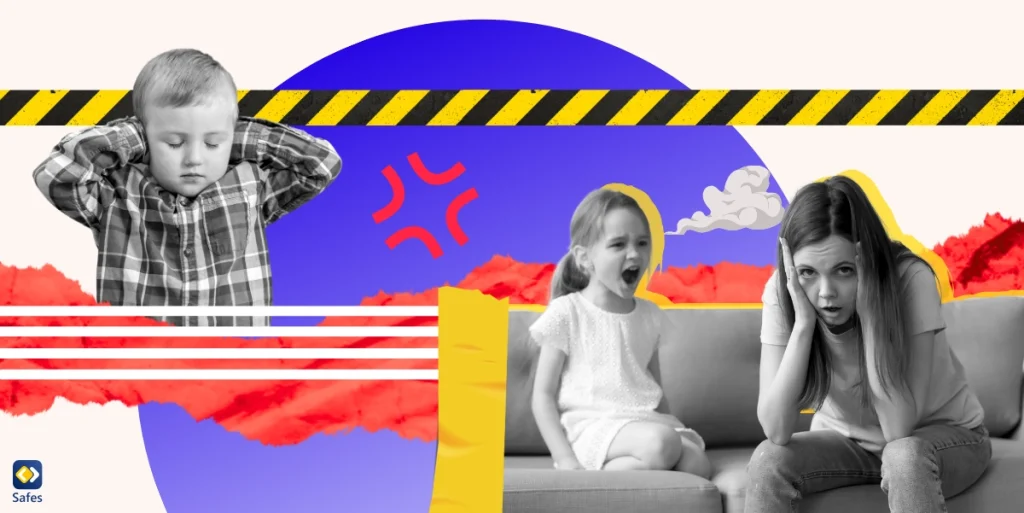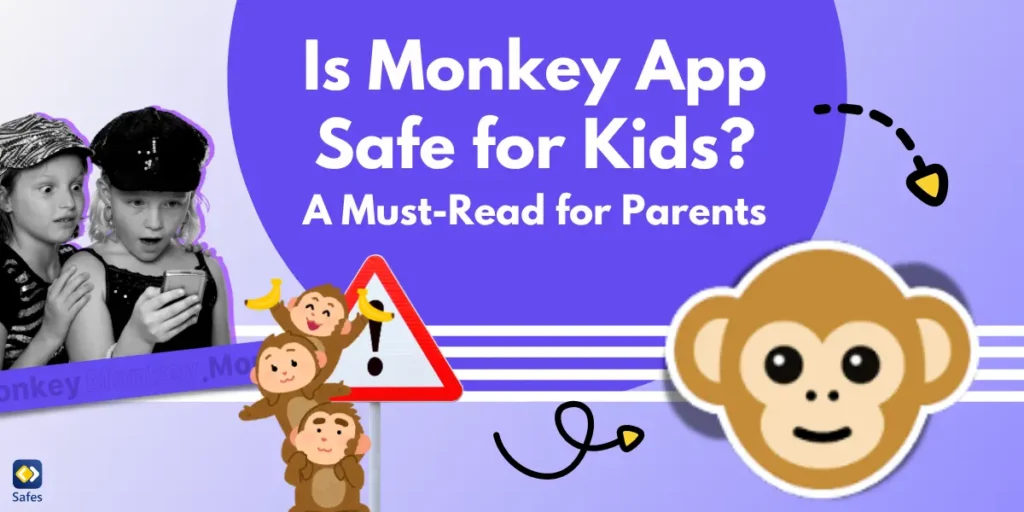Parenting a stubborn child presents unique challenges that can test the patience of even the most understanding parents. Encountering such strong-willed behavior is a frequent challenge in the journey of child-rearing. This blog post aims to unpack the complexities of dealing with a stubborn child and to offer useful strategies to help you navigate this often tricky path.
Download and Start Your Free Trial of the Safes Parental Control App
If you’re wondering how to deal with a stubborn child, you’re not alone. This experience is a standard part of child development, and many parents face similar struggles. Here, we’ll explore effective methods and insights to manage stubborn behavior, aiming to transform challenges into opportunities for growth and connection.
Understanding Stubbornness in Children
Let’s delve into what stubbornness means in children and examples of stubborn behavior, why it surfaces, and how it differs from being merely strong-willed.
What Makes a Child Stubborn?
Stubbornness in children is often viewed as a personality trait characterized by a persistent refusal to change their opinions or actions despite attempts to persuade otherwise. Stubborn kids may frequently engage in power struggles, for instance, resisting when told it’s time to buckle up in the car seat. This defiance is not just about the car seat—it symbolizes their broader reluctance to be guided or corrected.
The Psychology Behind the Stubbornness
Psychologically, stubbornness arises when children feel a need to assert independence and control over their environment. This behavior is especially prevalent among those who display examples of passive-aggressive behaviors in kids, such as deliberately slow responses to requests or avoiding direct confrontation, yet still resisting authority in subtle ways.
Strong-Willed vs. Stubborn
It’s crucial to distinguish between strong-willed and stubborn behaviors. While both involve a degree of determination, strong-willed children are typically motivated by a deep-seated conviction and are often open to dialogue and reason. In contrast, stubbornness may reject compromise altogether, leading to ongoing conflicts and frustration.
Common Triggers of Stubborn Behavior
Let’s explore what typically sparks stubborn behavior in children, from daily interactions to more complex emotional responses.
Situational Sparks
Stubborn behavior in children often emerges from specific situations or environments that challenge their sense of control or comfort. For example, a strong-willed child might exhibit stubbornness when asked to participate in an activity that conflicts with their strong opinions or desires. Understanding these triggers is crucial for managing reactions in the long term.
The Role of School Stress
The impact of mental health in schools cannot be understated when discussing behavioral issues like stubbornness. High levels of academic and social pressure can make a child feel overwhelmed or defensive, leading them to dig in their heels as a form of coping with stress.
Fatigue and Friendships
Tiredness and peer dynamics also play significant roles in influencing a child’s behavior. A tired child is more likely to resist instructions or engage in power struggles. Similarly, interactions with peers that go poorly can exacerbate stubborn behavior as children might cling to their views more tightly to assert themselves.
Effective Communication Strategies
Let’s explore how the right communication techniques can significantly improve interactions with a strong-willed or stubborn child.

Importance of Open and Empathetic Communication
When communicating with children, especially those who are strong-willed or stubborn, it is crucial to employ open and empathetic communication. This involves understanding and acknowledging your child’s feelings and viewpoints without judgment, making them feel heard and valued. According to Quenza, using simple, clear language and breaking down information into manageable parts can make your communication more effective, promoting better understanding on both sides.
Techniques for Active Listening
Active listening is fundamental in dealing with a stubborn child. This means genuinely paying attention to what the child says without planning your next response. Reflecting their feelings back to them is a key strategy. For example, saying “It seems like you are upset,” helps children identify and cope with their emotions. This approach not only acknowledges their feelings but also helps them feel safer in expressing themselves.
Expressing Thoughts and Feelings
When expressing your own thoughts and feelings to your child, it’s essential to maintain calm and avoid escalating the situation. Techniques such as using “I” statements can help you convey your feelings without making the child feel blamed. For instance, saying “I feel worried when you don’t listen to me” instead of “You never listen” can prevent defensiveness and keep the lines of communication open.
By integrating these strategies into your daily interactions, you can enhance your ability to handle discussions with strong-willed children effectively, reducing the frequency and intensity of power struggles. This approach not only addresses how to handle a stubborn child but also fosters a respectful and cooperative relationship long term.
Setting Boundaries and Consistency
Clear and consistent boundaries are essential in managing stubborn behavior in children. Establishing these limits helps children understand what is expected of them and the consequences of their actions. This consistency not only aids in reducing behavioral issues but also promotes positive outcomes by creating a predictable environment.
When setting rules, it’s important they are fair and easily understandable for the child. This means explaining the reasons behind the rules and ensuring they are age-appropriate. A rule that is clear and rational increases the likelihood of the child respecting and following it, thus fostering good behavior.
Effective consequence management involves ensuring that the consequences for not following the rules are logical and related to the behavior. This approach helps reinforce the learning of appropriate behaviors without the need for harsh punishments. Being a role model in how you enforce these consequences also teaches your child about fairness and responsibility.
Positive Reinforcement Techniques
Positive reinforcement is a strategy used to encourage desirable behavior by offering rewards following those behaviors. This technique is effective because it builds on natural desires to repeat actions that lead to positive outcomes. It’s especially useful in dealing with a stubborn toddler, as it focuses on what they do right rather than wrong.
For a stubborn toddler, positive reinforcement can be as simple as praising them for taking a deep breath instead of having a tantrum or rewarding them with extra playtime for sharing toys with friends. These rewards immediately follow the desired behavior, making the connection clear and strengthening the likelihood of repetition.
While commonly used with young children, positive reinforcement is effective with stubborn people of all ages. Acknowledging and rewarding efforts to change can motivate even the most resistant individuals. This method not only promotes good behavior but also helps in building a positive and supportive relationship.
When to Seek Professional Help
When the behavior of a stubborn child becomes pervasive and significantly disrupts daily functioning, it may be indicative of deeper mental health issues. If your efforts to parent a stubborn, closed-minded child consistently fail or the child shows signs of distress beyond typical scenarios, it’s important to consider underlying causes that might require professional intervention.
Seeking help from an educational psychologist or a child behavioral specialist is advisable when you observe persistent defiance or distress that affects your child’s social interactions or learning. Professionals can provide assessments and tailored interventions that address both behavioral patterns and emotional needs, offering guidance and support to improve the child’s overall well-being.

Take Control With Safes
Managing a stubborn child’s online activities can be challenging, but with Safes parental control app, you gain a supportive tool that integrates seamlessly into your family’s digital life. Compared to Windows parental control, Safes offers more robust parental controls, allowing you to monitor and manage what’s important. Visit our website for more information and to start your free trial. Download now for iOS and Android and take the first step towards smarter, safer digital parenting.
Conclusion
We’ve explored various strategies to manage a stubborn child, from understanding the triggers of stubborn behavior to employing positive reinforcement techniques. These approaches emphasize the importance of empathy, clear communication, and consistency in setting boundaries and expectations.
As you implement these strategies, remember the value of patience and persistence. Stubbornness can be challenging, but with steady and loving guidance, you can foster a healthier relationship while effectively addressing behavioral challenges. Keep in mind that every small step forward is progress in building a supportive and understanding family dynamic.
Your Child’s Online Safety Starts Here
Every parent today needs a solution to manage screen time and keep their child safe online.
Without the right tools, digital risks and excessive screen time can impact children's well-being. Safes helps parents set healthy boundaries, monitor activity, and protect kids from online dangers—all with an easy-to-use app.
Take control of your child’s digital world. Learn more about Safes or download the app to start your free trial today!




